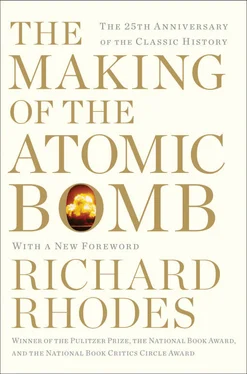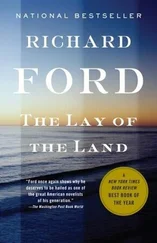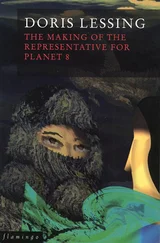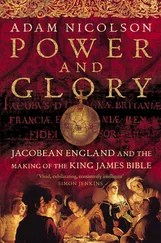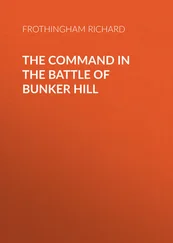* * *
Chaim Weizmann, the tall, sturdy, Russian-born Jewish biochemist who was Ernest Rutherford’s good friend at Manchester, was a passionate Zionist at a time when many, including many influential British Jews, believed Zionism to be at least visionary and naive if not wrongheaded, fanatic, even a menace. But if Weizmann was a Zionist he was also deeply admiring of British democracy, and one of his first acts after the beginning of the war was to cut himself off from the international Zionist organization because it proposed to remain neutral. Its European leaders hated Czarist Russia, England’s ally, and so did Weizmann, but unlike them he did not believe that Germany in cultural and technological superiority would win the war. He believed that the Western democracies would emerge victorious and that Jewish destiny lay with them.
He, his wife and his young son had been en route to a holiday in Switzerland at the outbreak of the war. They worked their way back to Paris, where he visited the elderly Baron Edmond de Rothschild, financial mainstay of the pioneering Jewish agricultural settlements in Palestine. To Weizmann’s astonishment Rothschild shared his optimism about the eventual outcome of the war and its possibilities for Jewry. Though Weizmann had no official position in the Zionist movement, Rothschild urged him to seek out and talk to British leaders.
That matched his own inclinations. His hope of British influence had deep roots. He was the third child among fifteen of a timber merchant who assembled rafts of logs and floated them down the Vistula to Danzig for milling and export. The Weizmanns lived in that impoverished western region of Russia cordoned off for the Jews known as the Pale of Settlement. When Chaim was only eleven he had written a letter that prefigured his work in the war. “The eleven-year-old boy,” reports his biographer Isaiah Berlin, “says that the kings and nations of the world are plainly set upon the ruin of the Jewish nation; the Jews must not let themselves be destroyed; England alone may help them to return and rise again in their ancient land of Palestine.” 322
Young Weizmann’s conviction drove him inexorably west. At eighteen he floated on one of his father’s rafts to West Prussia, worked his way to Berlin and studied at the Technische Hochschule. In 1899 he took his Ph.D. at the University of Fribourg in Switzerland, then sold a patent to Bayer that considerably improved his finances. He moved to England in 1904, a move he thought “a deliberate and desperate step…. I was in danger of degenerating into a Luftmensch [literally, an “air-man”], one of those well-meaning, undisciplined and frustrated ‘eternal students.’” 323Chemical research would save him from that fate; he settled in Manchester under the sponsorship of William Henry Perkin, Jr., the head of the chemistry department there, whose father had established the British coal-tar dye industry by isolating aniline blue, the purple dye after which the Mauve Decade was named.
Returning to Manchester from France in late August 1914, Weizmann found a circular on his desk from the British War Office “inviting every scientist in possession of any discovery of military value to report it.” He possessed such a discovery and forthwith offered it to the War Office “without remuneration.” 324The War Office chose not to reply. Weizmann went on with his research. At the same time he began the approach to British leaders that he and Rothschild had discussed that would elaborate into some two thousand interviews before the end of the war.
Weizmann’s discovery was a bacillus and a process. The bacillus was Clostridium acetobutylicum Weizmann, informally called B-Y (“bacillus-Weizmann”), an anerobic organism that decomposes starch. He was trying to develop a process for making synthetic rubber when he found it, on an ear of corn. He thought he could make synthetic rubber from isoamyl alcohol, which is a minor byproduct of alcoholic fermentation. He went looking for a bacillus—millions of species and subspecies live in the soil and on plants—that converted starch to isoamyl alcohol more efficiently than known strains. “In the course of this investigation I found a bacterium which produced considerable amounts of a liquid smelling very much like isoamyl alcohol. 325But when I distilled it, it turned out to be a mixture of acetone and butyl alcohol in very pure form. Professor Perkins advised me to pour the stuff down the sink, but I retorted that no pure chemical is useless or ought to be thrown away.”
That creature of serendipity was B-Y. Mixed with a mash of cooked corn it fermented the mash into a solution of water and three solvents—one part ethyl alcohol, three parts acetone, six parts butyl alcohol (butanol). The three solvents could then be separated by straightforward distillation. Weizmann tried developing a process for making synthetic rubber from butanol and succeeded. In the meantime, in the years just prior to the beginning of the war, the price of natural rubber fell and the clamor for synthetic rubber stilled.
Pursuing his efforts toward a Jewish homeland, Weizmann acquired in Manchester a loyal and influential friend, C. P. Scott, the tall, elderly, liberal editor of the Manchester Guardian. Among his many connections, Scott was David Lloyd George’s most intimate political adviser. Weizmann found himself having breakfast one Friday morning in January 1915 with the vigorous little Welshman who was then Chancellor of the Exchequer and who would become Prime Minister in the middle of the war. 326Lloyd George had been raised on the Bible. He respected the idea of a Jewish return to Palestine, especially when Weizmann eloquently compared rocky, mountainous, diminutive Palestine with rocky, mountainous, diminutive Wales. Besides Lloyd George, Weizmann was surprised to find interest in Zionism among such men as Arthur Balfour, the former Prime Minister who would serve as Foreign Secretary in Lloyd George’s cabinet, and Jan Christiaan Smuts, the highly respected Boer who joined the British War Cabinet in 1917 after serving behind the scenes previously. “Really messianic times are upon us,” Weizmann wrote his wife during this period of early hope. 327
Weizmann had cultured B-Y primarily for its butanol. He happened one day to tell the chief research chemist of the Scottish branch of the Nobel explosives company about his fermentation research. The man was impressed. “You know,” he said to Weizmann, “you may have the key to a very important situation in your hands.” 328A major industrial explosion prevented Nobel from developing the process, but the company let the British government know.
“So it came about,” writes Weizmann, “that one day in March [1915], I returned from a visit to Paris to find waiting for me a summons to the British Admiralty.” 329The Admiralty, of which Winston Churchill, at fortyone exactly Weizmann’s age, was First Lord, faced a severe shortage of acetone. That acrid solvent was a crucial ingredient in the manufacture of cordite, a propellant used in heavy artillery, including naval guns, that takes its name from the cordlike form in which it is usually extruded. The explosive material that hurled the heavy shells of the British Navy’s big guns from ship to ship and ship to shore across miles of intervening water was a mixture of 64 parts nitrocellulose and 30.2 parts nitroglycerin stabilized with 5 parts petroleum jelly and softened—gelatinized—with 0.8 percent acetone. Cordite could not be manufactured without acetone, and without cordite the guns would need to be extensively rebuilt to accommodate hotter propellants that would otherwise quickly erode their barrels.
Weizmann agreed to see what he could do. Shortly he was brought into the presence of the First Lord. As Weizmann remembered the experience of meeting the “brisk, fascinating, charming and energetic” Winston Churchill: 330
Читать дальше
